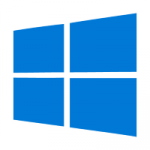 Last month, after users reported file deletion issues, Microsoft took the Windows 10 October Update offline. Yesterday, the (now fixed) update was again made available. Microsoft has slowed their rollout this time, and for now, you can only get the update by manually checking for updates in Windows Update. If there are no new problems, Microsoft will gradually push the update out to all Windows 10 computers over the coming weeks.
Last month, after users reported file deletion issues, Microsoft took the Windows 10 October Update offline. Yesterday, the (now fixed) update was again made available. Microsoft has slowed their rollout this time, and for now, you can only get the update by manually checking for updates in Windows Update. If there are no new problems, Microsoft will gradually push the update out to all Windows 10 computers over the coming weeks.
In the month since the October update was pulled, Microsoft did a lot of soul-searching (aka process review), and the results of that work, detailed in a November 13 blog post, make for interesting reading. Here are the highlights:
- Microsoft is trying to be more transparent about how it tests new versions of Windows before they are released. This is a good thing.
- Adequate testing is difficult because there are so many possible combinations of hardware and software being used on Windows 10.
- Base functional testing is the responsibility of the development teams. Presumably dedicated testing staff did this previously.
- Data and user feedback are being used to gauge quality.
- According to Microsoft, October update issues aside, overall quality and user satisfaction are increasing with each new Windows 10 update.
- Employees working on Windows 10 have to ‘eat their own dog food’, meaning that they are required to use Windows 10 themselves.
- As many as 15,000 new device drivers are added to Windows each month.
- “The first principle of a feature update rollout is to only update devices that our data shows will have a good experience.” I find this wording amusing: in this case a ‘good experience’ means one where you’re less likely to throw yourself off a building after trying to update your O/S.
Update 2018Dec19: “Rollout Status as of December 17, 2018: Windows 10, version 1809, is now fully available for advanced users who manually select “Check for updates” via Windows Update.” See Windows 10 Update History.
 boot13
boot13